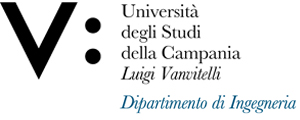Insegnamento di AFFIDABILITA' DEI SISTEMI SOFTWARE COMPLESSI
Corso di laurea magistrale in INGEGNERIA INFORMATICA
SSD: ING-INF/05
CFU: 6,00
ORE PER UNITÀ DIDATTICA: 48,00
Periodo di Erogazione:
Italiano
| Lingua di insegnamento | ITALIANO |
| Contenuti | Il corso di Affidabilità dei Sistemi Software Complessi mira a fornire le metodologie e le tecniche di analisi, progettazione e verifica di affidabilità del software. In particolare, tali concetti Il corso di Affidabilità dei Sistemi Software Complessi mira a fornire le metodologie e le tecniche di analisi, progettazione e verifica di sicurezza ed affidabilità del software. In particolare, tali concetti vengono affrontati inquadrandoli nel contesto dei sistemi software complessi e critici. |
| Testi di riferimento | L'analisi quantitativa dei sistemi critici. Andrea Bondavalli. Ed. Esculapio |
| Obiettivi formativi | Sviluppo di capacità di ragionamento e di critica nell'analisi e nella progettazione di sistemi software affidabili e sicuri. |
| Prerequisiti | Conoscenza dei fondamenti dell’ingegneria del software. |
| Metodologie didattiche | Lezioni frontali e slide/dispense |
| Metodi di valutazione | Prova orale |
| Programma del corso | 1. Introduzione al corso: i sistemi complessi e critici; |
English
| Teaching language | Italian |
| Contents | The Reliability of Complex Software Systems course aims to provide the methodologies and techniques for analysis, design and verification of software security and reliability. In particular, these concepts are addressed in the context of complex and critical software systems. |
| Textbook and course materials | L'analisi quantitativa dei sistemi critici. Andrea Bondavalli. Ed. Esculapio |
| Course objectives | Development of critical skill in the analysis and design of reliable and secure software systems. |
| Prerequisites | Software Engineering |
| Teaching methods | Frontal lessons - Slide |
| Evaluation methods | Oral exam |
| Course Syllabus | 1. Introduction to the course: complex and critical systems; |








